Working
We rise well before dawn, well before that moment where the sun creeps over the jagged island peaks to warm the earth, sodden with morning dew and Californian sea spray. We make our hot drinks in the tiny kitchen, sleepily working around one another, passing in the narrow hallway. Some hero puts on a pot of coffee. Some days there is fog, and when we drive out to check the traps, the road is covered in a mixture of dust and cloud which coats the trucks in a thin brown film.
We meet at the old clinic, a relic from a time when it was essential to save the life of every captured Island Fox, lest the population perish from the invasive spread of the canine distemper virus. In 2001, there were 100 Island Foxes left on Catalina, and every individual captured was the key to its species’ survival. Now, thankfully, we are sentinels, not soldiers, watching the population carefully for signs of new disease, vaccinating our foxes and keeping up their health by trapping and handling over 400 individuals each year. The population has now stabilized around 2,000.
At the clinic, we all have our own roles. Some prepare vaccines, others pack bait bags to re-bait the traps. We have a sleepy pep talk and go over the plan once more before loading up into the trucks and driving out to the trapline as the sun, finally, begins to rise.
On the trap line, there are runners and handlers. Runners drive ahead of the handlers to check the traps while handlers follow, working up foxes along the way. I’m a runner and so I drive on past my handler, and begin checking each trap. Early in the morning there’s a lingering chill, so I wear my blaze-orange beanie. This is to help hunters not mistake me for a deer as I crawl around under bushes, retrieving traps and re-baiting them if we haven’t caught a fox. In traps where there are foxes, it’s my job to scan for a PIT tag to see if it’s been caught before. These tags go under the skin on the scruff of their neck and are identical to the ones domestic pets get. Scanning for a PIT tag requires a significant amount of concentration; at first, reaching into the trap and prodding at the wild animal that growls, barks, and snaps at your (gloved) hand was incredibly daunting. But now, after having done it a couple hundred times, I have the technique down to a science: rustle my boot near the bottom of the cage to divert the fox’s attention, plunge the scanner down quickly and pin the head, quick swipe down the back.
After I've scanned all of the foxes, written down their PIT tag numbers, and flagged their locations for the handlers, I loop back around to join them while they work on foxes. After the handler has pulled the fox from the trap (an art form, truly, which I have now learned and am starting to practice), there are several things they check: sex, reproductive status, age class (by looking at their teeth), body condition, ectoparasites (ticks, fleas, lice), ear condition, and any injuries. Then, depending on what the fox needs, they draw blood and vaccinate. Some foxes get a radio collar so we can monitor them from afar. After vaccinations, the fox gets some frontline for parasites, and then we send them on their way. There’s a cute moment after a fox is released where it stops and turns back to look at us before shaking (like a wet dog) and bounding off into the underbrush.
During my first week of trapping, I just watched all of these procedures happen. It was truly amazing to see how confidently our handlers worked with the foxes, and the swiftness with which they were able to complete all of the tasks necessary. As with learning to scan a fox’s PIT tag, I was terrified, and yet excited to start doing some handling of my own. Just a couple of weeks ago, I finally got the chance. Actually holding the fox, maintaining control, was an unbelievable moment. I was laser-focused, pumping with adrenaline as the handler gave me tips and directed my every move. Soon I too learned to check the ears and give a vaccine, and now, I am (somewhat) comfortably completing an entire basic workup, from pulling the fox from the trap to conducting a full health check and then releasing. Some things I’ve gotten better at, others I’ve even gotten used to. But that initial moment of picking up the animal, and the intense focus required throughout the course of the process are things that will never change.
Weekending
What does one do on the weekends on Catalina? Well, sometimes, I leave. Once, I went back to San Diego and partied with good friends. I cooked dinners with Fran and rode a scary wave that broke hard and shot me down the beach like a rocket. It was the biggest wave I’ve ever surfed.
Another time, I drove off into the desert with friends, where we explored an oasis and had a drink in a small saloon in a sweltering town. We rode in the back of a pickup truck through canyons dotted with cholla and burned brittle wood under a ceiling of stars.
On the island, I cherish an extra hour of sleep. I make a good cup of strong coffee and drink it out of a ceramic mug, which feels like a treat after a week of using my thermos. I take my coffee and binoculars out to the little table behind my little house and wait for the birds to wake up watch as the sun peers over the mountains. On a good morning I’ll see over ten species: Bewick’s Wrens, Orange Crowned Warblers, Acorn Woodpeckers, and Ruby Crowned Kinglets are all frequent visitors. If I’m inspired by the morning’s sightings (and sufficiently caffeinated) I may mosey on past the horse stables, say hello to Auggie the donkey, and take a walk around the reservoir with my binocs. I once saw a Green Heron over there and am constantly on the lookout for him. The reservoir is also where our local bison, nicknamed Cupcake, likes to hang out. I walk cautiously; it’s no good to jump-scare a bison.
After some birding, I like to ramble around the island. There’s a little bay called Shark Harbor (not because there are sharks there, there’s just a rock that looks like a shark fin, if you squint) where apparently, a magical wave breaks. Well, I’ve never seen it break, but I’ve spent many an hour paddling around, catching shore break and snorkeling through great forests of kelp. Bright orange Garabaldi fish float around the kelp, schools of little blue fish dart amongst the rocks, and leopard sharks (harmless!) swim lazily along the floor of the sea, their striking patterns shining in the sunlight. The water is crystal clear; I feel like I’m in an Attenborough documentary.
Sometimes I’ll drive up to the Airport in the Sky. They have great lunch and a great view.
On some weekends, people come and visit me. My good friend Mike came last weekend to participate in the Christmas Bird Count, a nationwide effort organized by the Audubon Society wherein participants count all of the birds they see and report them to the Society as a census to see what species are where. We saw an adult Bald Eagle first thing in the morning and all three wrens common to the island (Rock, House, and Bewick’s), so it was a pretty successful day.
One weekend, Fran came to visit and we camped at a secret beach, the only spot on the island you’re allowed to camp without a reservation. The waves were huge and sent a sea spray that wafted up the canyon but we were cozy in our little tent, after a simple meal and a driftwood fire under shooting stars and a full moon.



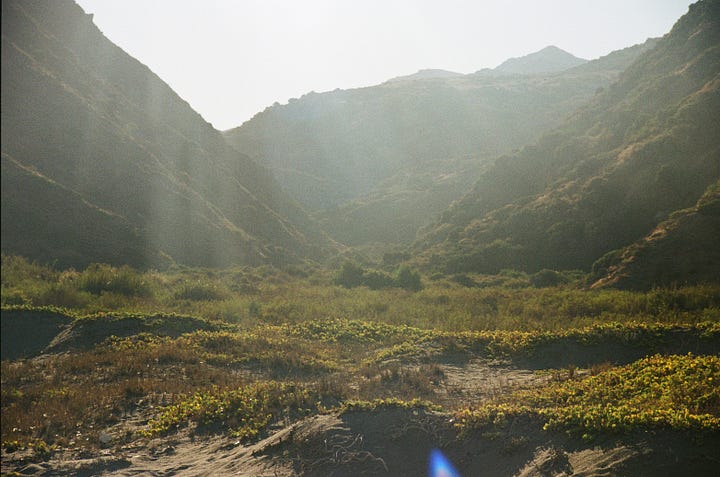
A couple of weekends ago, eight friends from San Diego descended on the island to hike the Trans-Catalina Trail, a 20+ mile hike that starts in the town of Avalon and winds around to the small community of Two Harbors. After work, I hiked some six miles with my pack to meet the crew at the first campground; they had hiked a full eleven mile day and were far more tired than I was. For the next two days, we wandered up and down sandy peaks, around clumps of cacti, and across sweeping island vistas. We passed bison, foxes, and camped near Shark Harbor where we met three very friendly campsite cats. We played games and gave ourselves trail names and tried not to think too hard about the weight of our packs and our sore feet. We rose and slept by the sun, too tired to stay up past 8pm. We slept, weary and thankful, and rose early to make hot beverages. On Sunday, we trekked up steep oceanside ridges, where the trail rode a knife’s edge and the cliffs plunged to the sea on the west side. After stumbling into Two Harbors, we procured beer and pizza before I said au revoir and headed to my coworkers beautiful little house in Avalon where I made Christmas wreaths with a group of people who were strangers two months ago, now friends.
Most of my work here centers around the fox program. When we’re not trapping, we’re driving around the island using a radio scanner to check on our collared foxes. Or we’re entering and proofing data from trapping weeks and preparing the annual report, due in January. Or, sadly, when someone reports a dead fox to the Conservancy hotline, we retrieve the carcass and conduct a mortality assessment, to figure out important details about age, sex, and cause of death. Sometimes we work on other wildlife projects, like changing the SD cards of the bat detection devices, or sorting through camera trap photos, looking for the elusive Catalina Island Shrew.
Most weeks, when we’re not trapping, it’s a strange blend of fieldwork and a (semi) traditional 9-5 (or 7-3:30, more accurately). I get up, drive over to the Barn (Conservancy headquarters), have a team meeting, and go about any data or office tasks I have for the day before heading out to work in the field on whatever projects need attention. This semblance of normalcy, routine blended with the exciting elements of the field has been a really healthy mix for me. It’s given me a glimpse into what my life may look like someday as a career wildlife biologist: a workspace, field projects, colleagues, and a consistent routine that still prioritizes working outside with the animals. It’s exciting to imagine this future.
And yet there is still a strong part of me that misses the rugged ramblings of my owl job: waking up in a new forest every day, spending days without contact with society, seeing little pockets of nature and having encounters that most people would have no reason to experience. Hopefully there is more of that type of fieldwork in my future as well.
Learning to trap and handle foxes has been, in many ways, no different from learning anything else for any other kind of job: tasks that at one time felt daunting, difficult, and downright scary now feel routine, comfortable. In other ways, however, handling wild animals contains an element that I haven’t gotten used to; even those who have been doing this for twenty years express a similar sentiment. One reason for this difference is that the stakes are higher than most daunting job tasks: a bad bite from an Island Fox, despite our vaccinations and there being no recorded evidence of rabies on the island, requires a trip to the hospital and a nasty series of injections, just to ensure no rabies transmission occurs. It’s also high stakes for the fox: every vaccination, ear check, and antibacterial injection matters for the survival of this vulnerable species, and you don’t want to be the person that screws that up.
But there’s another element that sets this learning curve apart from other jobs I’ve had in the past, at least for me. Getting to actually hold the animal, to feel its fur and stare into its amber eyes, carries a whole different set of meaning. It goes without saying, given my choice of career, that I love wildlife, and animals in general. But I think anyone would have a similarly disarming experience if given the chance to feel the closeness. To observe these amazing creatures so closely, to contribute so directly to their survival, has been such a gift, and I pinch myself, day in and day out, that I get to do this for a living.
I’ve been enjoying doing hard things. I haven’t always. But the feeling I get from completing something challenging, or learning difficult skills, or pushing that comfort zone beyond where I thought possible, lets me know I’m doing something right. As my time on Catalina draws to a close and I prepare for my next adventure, I am feeling nothing but gratitude. For my peers, for this magical place, for this wonderful opportunity. But most of all, for the foxes!
I know this one was a long entry, but hey! It was my first in a while. Hope you enjoyed! I’ll be heading up the coast for my next wildlife gig, most likely in the forests of Northern California. I’ll hopefully be taking lots of pictures, so stay tuned!
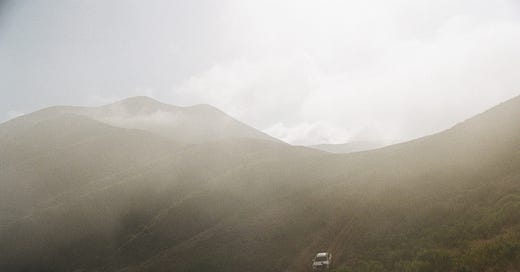






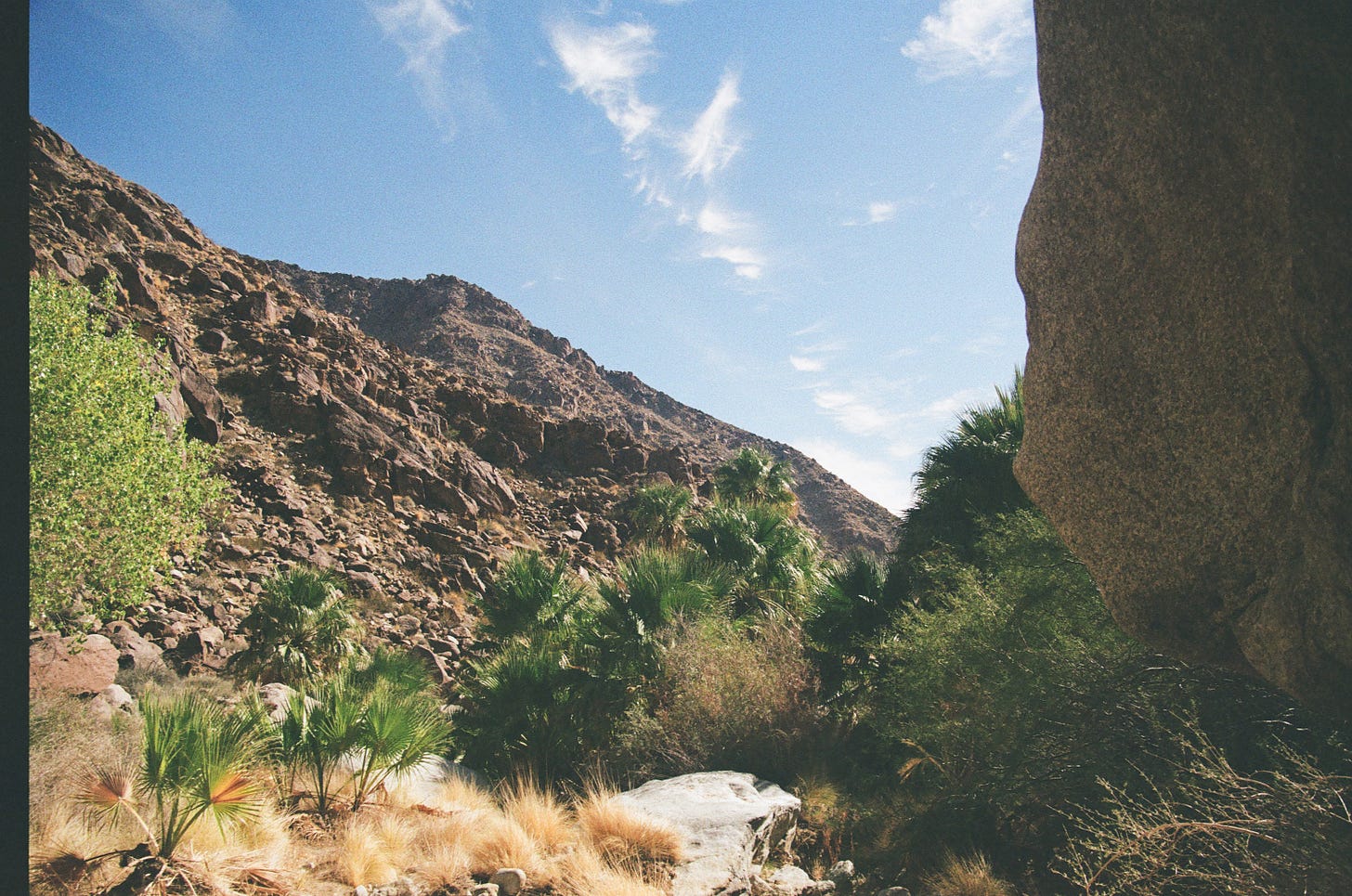


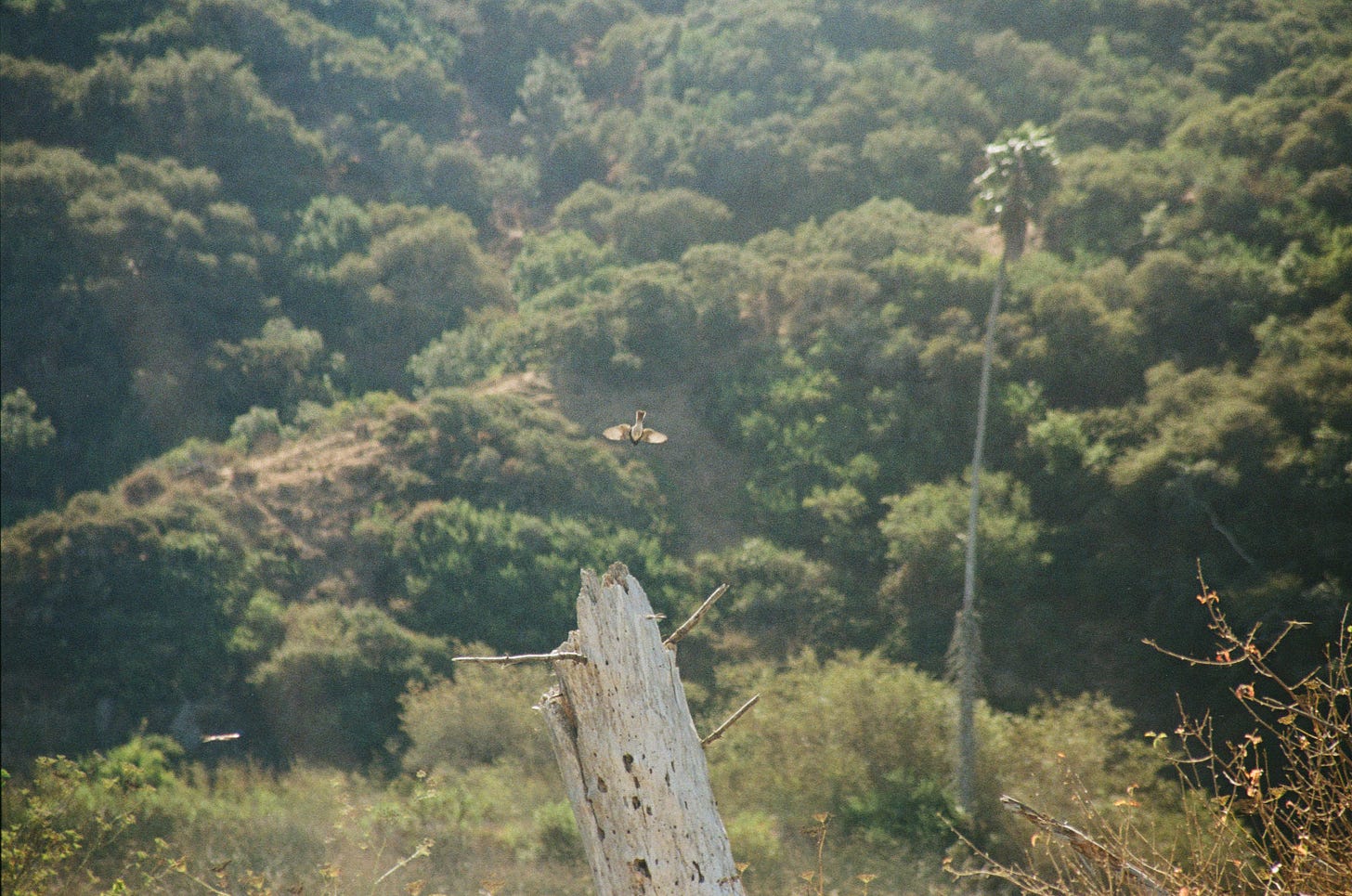
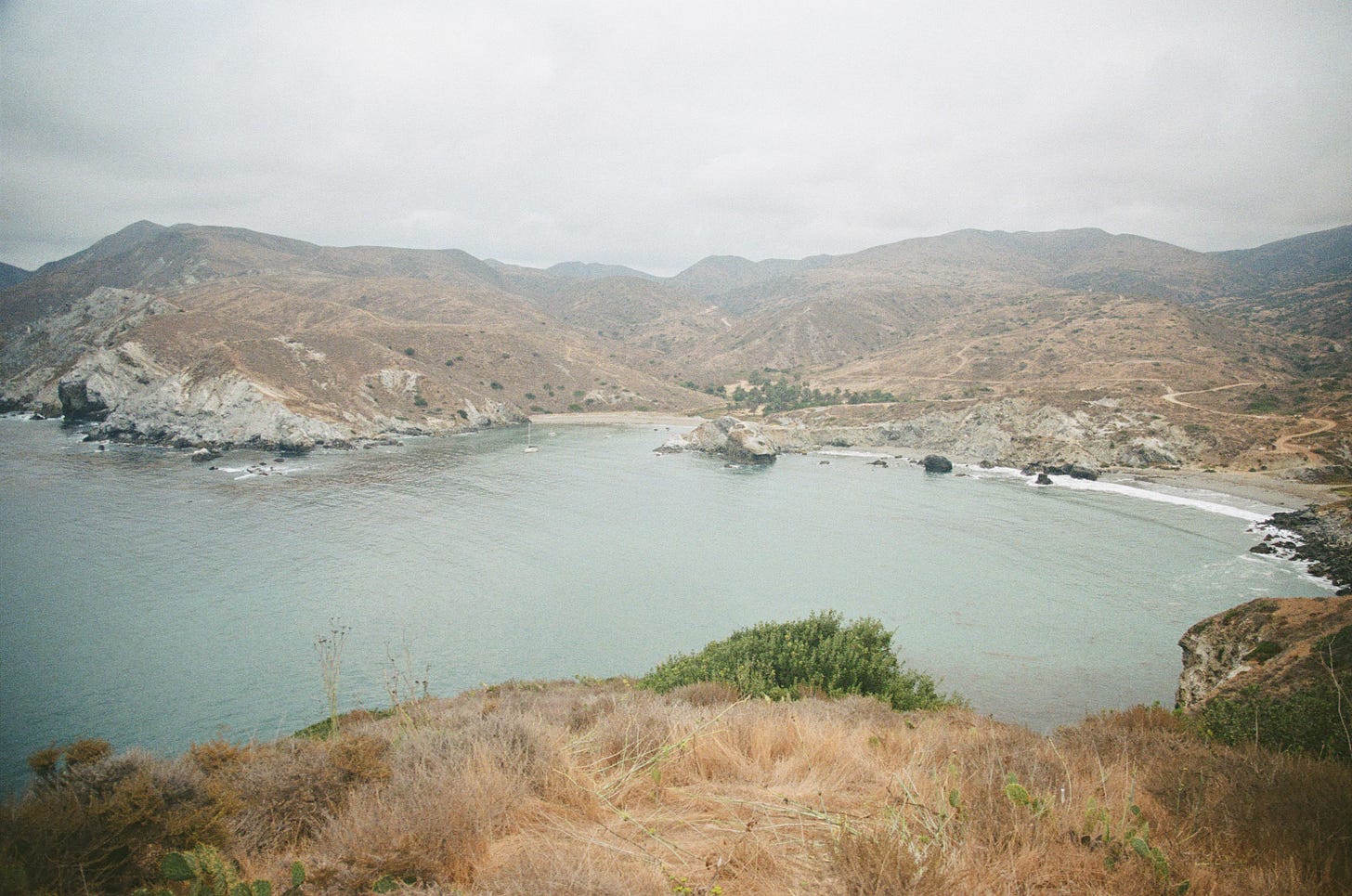

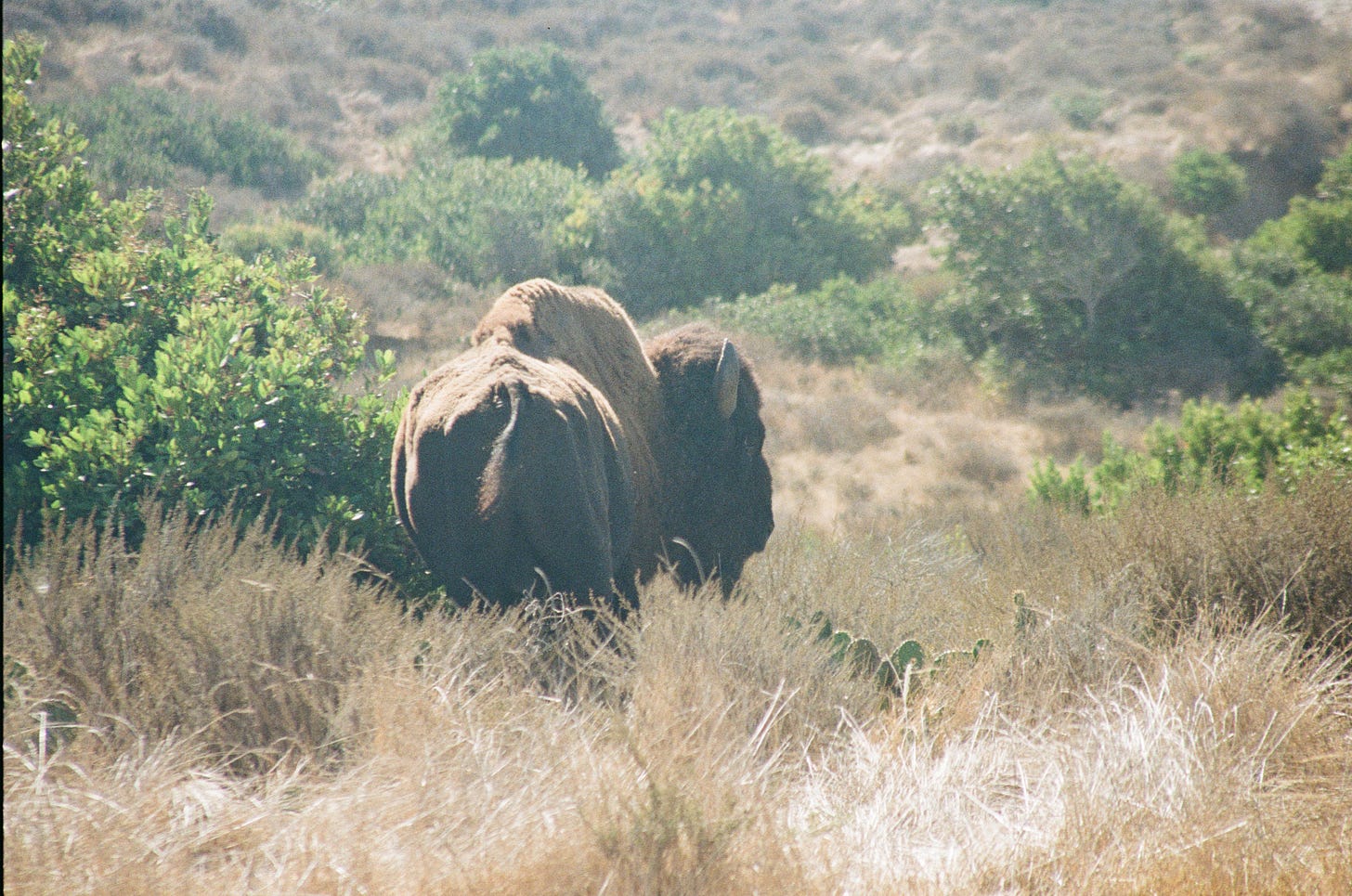


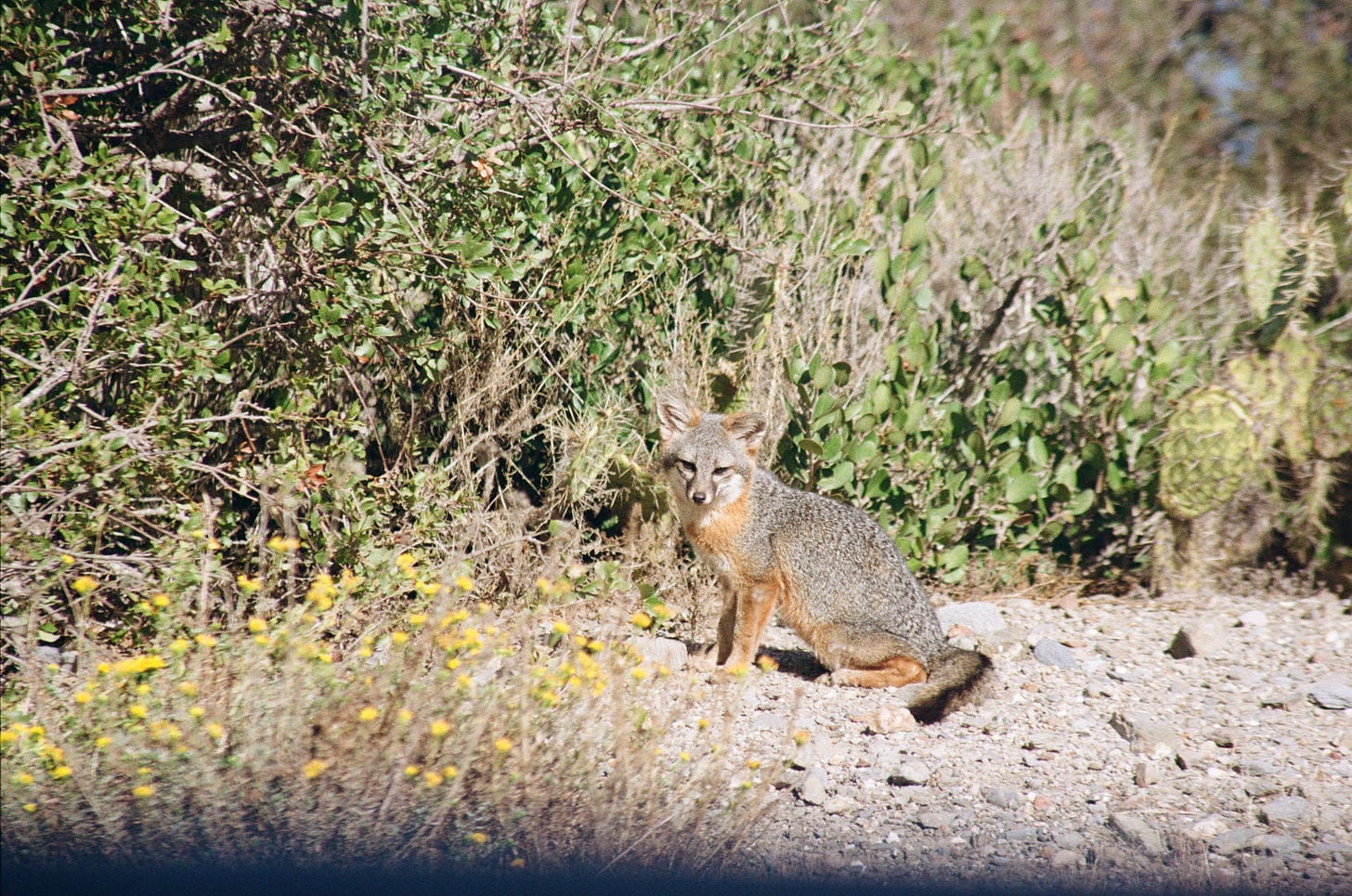
Blown away by these pictures ash wowowowow!! Xoxoxo
Asher, what a privilege to read your words, hear of your work, and be your mom! Amazing work! I couldn’t be prouder!